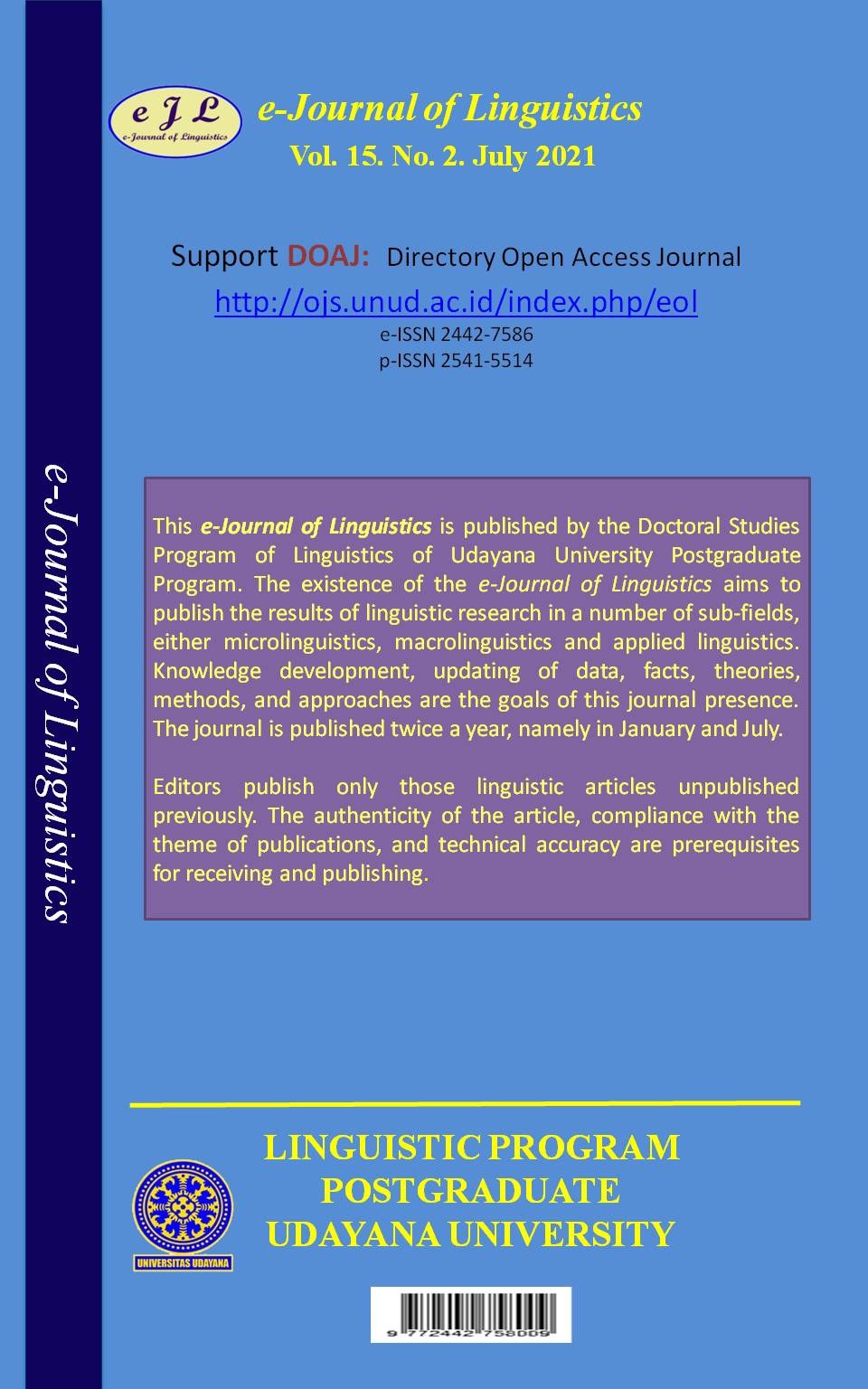Meaning Representation and Religious Symbols Occur in Baiturrahmah Grand Mosque, Denpasar-Bali
Abstract
Apart from being a place of worship, mosques also have cultural elements that can be researched, especially writing in and around them. This study uses the concept of landscape linguistics as a basis for explaining the meaning and symbols of religion including the writings on the Baiturrahmah Great Mosque in Denpasar. The purpose of this study was to determine the meaning and religious symbols behind the writing surrounding the mosque environment. This study used a qualitative methodology, where the writings about the mosque were recorded with a cellphone camera and analysed one by one. The results obtained from this study are not only the meaning displayed by the Baiturrahmah Grand Mosque, but also the religious symbols scattered in the writings around the mosque. Starting from writing the name of the mosque, writing on the place of ablution, writing on a charity box, a notice board, calligraphy in the room, to writing on sandals. All these writings if examined further turned out to have a variety of functions, namely information, promotions, prohibitions, appeals, decorations in the mosque.
Downloads
References
al-Qahthani, S. S. (2009, September 18). Al Manhaj. Retrieved from Al Manhaj: https://almanhaj.or.id/2524-pengertian-masjid.html
Ben-Rafael, E., Shohamy , E., & Barni, M. (2010). Introduction: an Approach to an ‘Ordered Disorder’. In E. Ben-Rafael, E. Shohamy, & M. Barni, Linguistic Landscape in the City (pp. xi-xxviii). Bristol: MPG Books Group.
Blommaert, J. (2013). Ethnography, Superdiversity and Linguistic Landscapes: Chronicles of Complexity. Ontario: Multilingual Matters.
Bourhis, R. (1992). La Langue D'affichage Publique et Commerciale au Québec: Plan de Recherche pour L'élaboration d'une loi Linguistique. Québec: Conseil de la Langue Française.
Darodjat, & Wahyudiana. (2014). Memfungsikan Masjid sebagai Pusat Pendidikan untuk Membentuk Peradaban Islam. Islamadina Volume XIII, 1-13.
Landry, R., & Bourhis, R. (1997). Linguistic Landscape and Ethnolinguistic Vitality an Empirical Study. Journal of Language and Social Psychology, 23-49.
Purnama, Y. (2019, Juni 03). Adab-Adab Berpakaian Bagi Muslim dan Muslimah. Retrieved from Muslim.or.id: https://muslim.or.id/47057-adab-adab-berpakaian-bagi-muslim-dan-muslimah.html
Puzey, G. (2016). Linguistic Landscapes. In C. Hough, The Oxford Handbook of Names and Naming (pp. 476-496). Oxford: Oxford University Press.
Wardani, L. K. (2010). Fungsi, Makna dan Simbol Sebuah Kajian Teoritik. Seminar Jelajah Arsitektur Nusantara 101010, 1-10.

This work is licensed under a Creative Commons Attribution 4.0 International License











